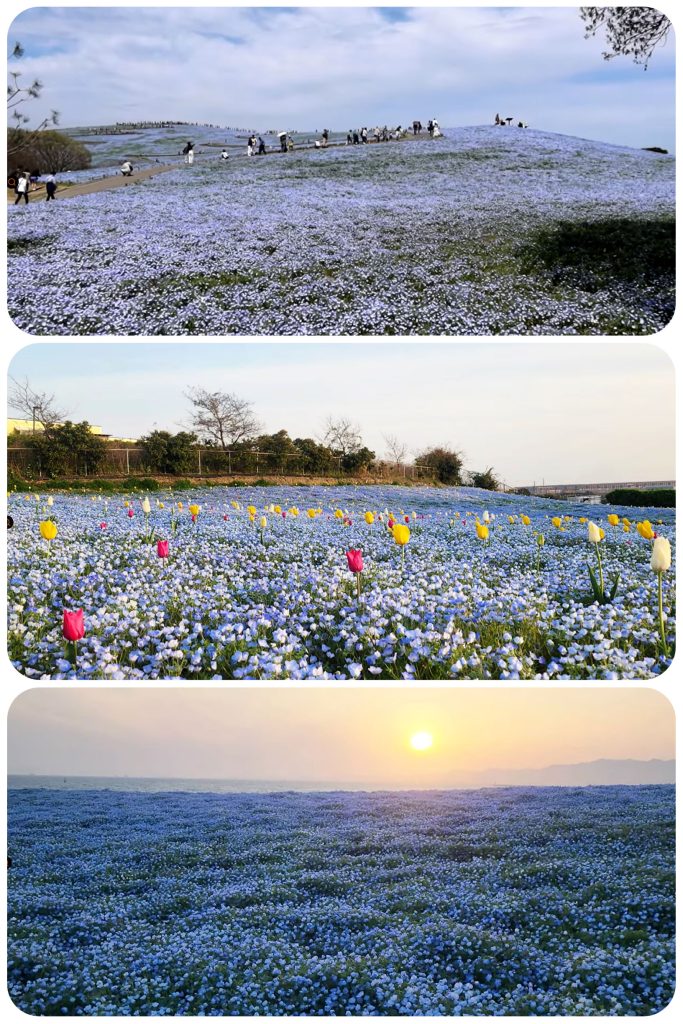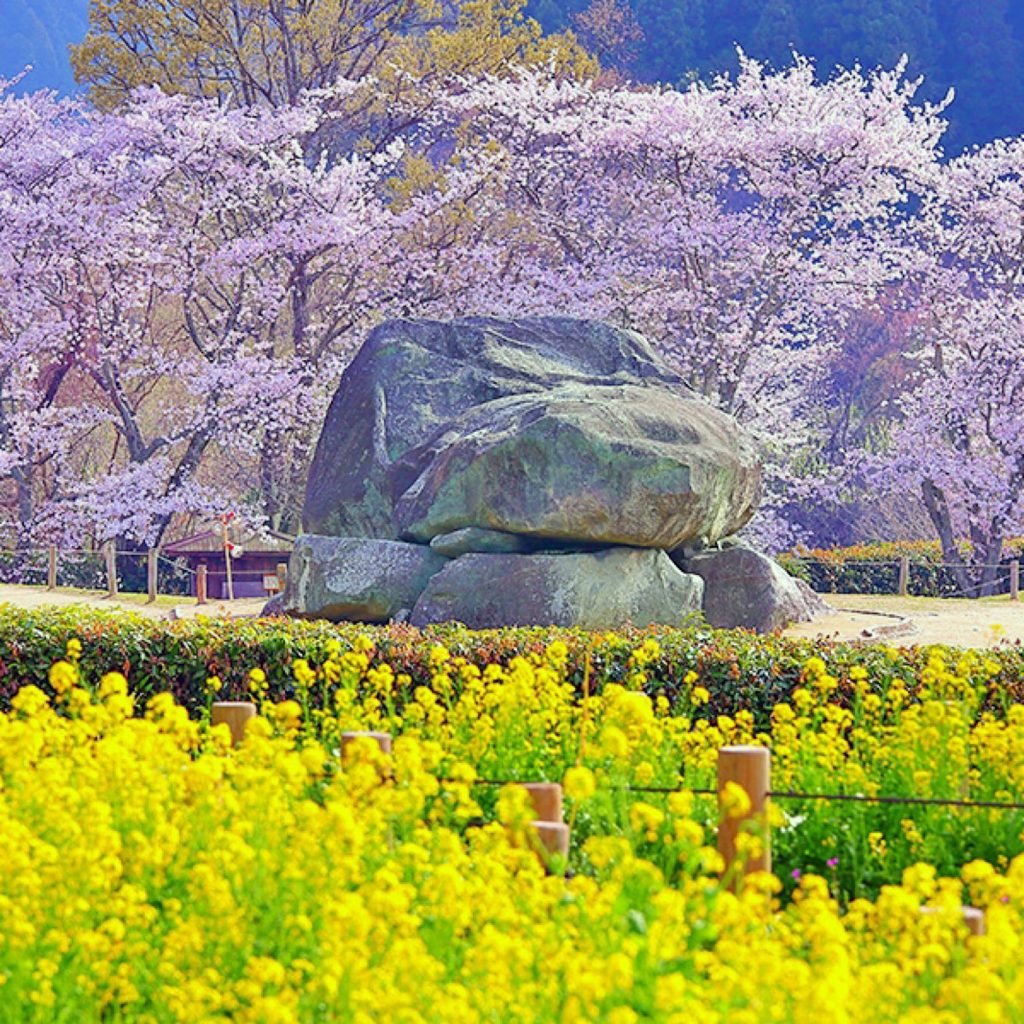
At the northern tip of Osaka Castle, along the northern outer moat, lies the ‘Osaka Castle Peach Orchard.’ It opened in March 1999 and currently boasts approximately 200 peach trees of about 12 varieties. Among these peaches, there are fruit-bearing ones and flowering ones, but all the peaches here are of the frower-bearing variety. Early-blooming varieties like Yaguchi and Kanpaku start flowering from early to mid-March. Following them, varieties like Genpei, Terute, and Kikumomo bloom, allowing visitors to enjoy until mid-April, including late-blooming ones.
The Kikumomo currently in bloom here have a tree height ranging from 2m to 3m, with branches thinner than ordinary peaches, and the trees are compactly clustered. Leaves do not appear when the flowers bloom; they emerge after the flowers have faded, similar to cherry blossoms. Another name for them is ‘Genjiguruma’ (Genji’s carriage). Genjiguruma, also called Goshoguruma, originated as a pattern on kimonos, depicting carriage wheels. It evokes the refined world of The Tale of Genji and was used as a family crest for its aesthetic significance. Kikumomo is a flowering peach imbued with such an elegant atmosphere.
Peaches are said to have been introduced to Japan during the Yayoi period, and in the Heian period, the Peach Festival on March 3 became a tradition, and peach blossoms began to be admired. During the Edo period, there was active breeding for ornamental peach blossoms, and most of today’s horticultural varieties were developed during that time. Currently, there is not much new breeding being done. In this sense as well, the Edo period was quite prosperous and laid the foundation for subsequent Japan.
大阪城の北端、北外堀の袂に「大阪城桃園」があります。1999年3月に開園し、現在は約12種200本の桃の木が植えられています。桃には実桃と花桃がありますが、ここの桃は全て花桃です。早咲きの矢口や関白は、3月上旬~中旬ごろに花を咲かせます。その後、源平や照手、菊桃などが咲き、遅咲きを含めると4月中旬まで楽しむことができます。今咲いている菊桃は樹高が2m〜3mで枝は普通の桃より細く樹木はコンパクトにまとまります。葉は花が咲いているときには出ず、花が終わった後に出るのは桜と同じです。別名を「ゲンジグルマ(源氏車)」といいます。源氏車は御所車とも呼び、元々着物の柄で、車輪を文様化したものです。源氏物語の雅な世界観を連想させ、賞美的な意義によって家紋としても用いられました。菊桃はそんな雅の雰囲気を持った花桃です。桃は日本へは弥生時代に渡来したとされ、平安時代には3月3日の桃の節句を祝うようになり、モモの花が観賞されるようになりました。観賞用の花桃としては、江戸時代に盛んに品種改良が行われ、現在の園芸品種も江戸時代に作出されたものがほとんどです。現在、品種開発はあまり行われていません。こう言う意味でも、江戸時代はかなり豊かでその後の日本の礎になった事がわかります。









